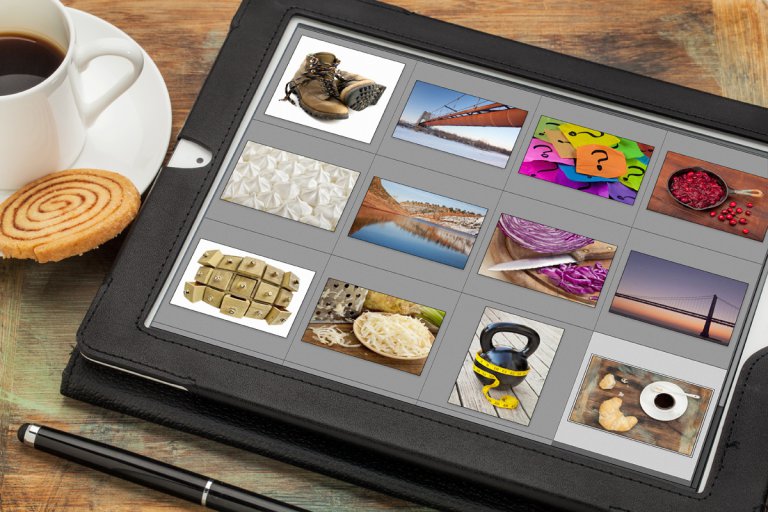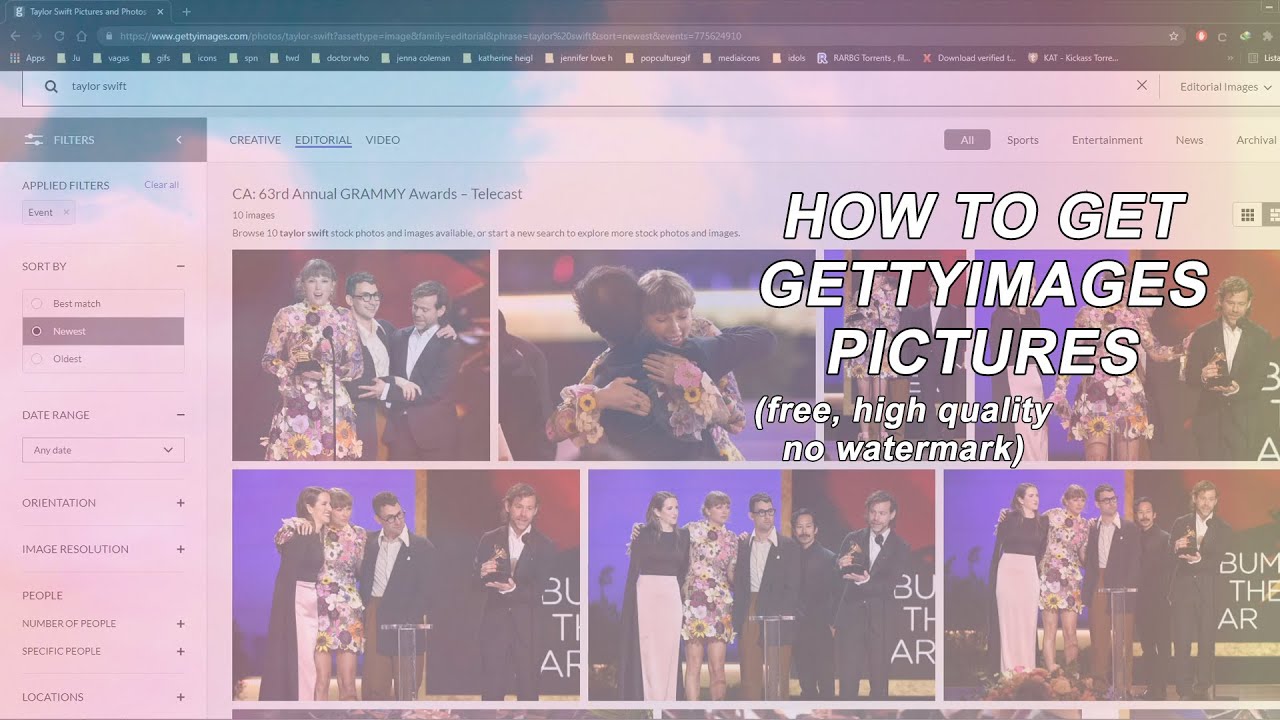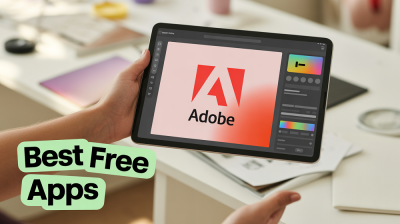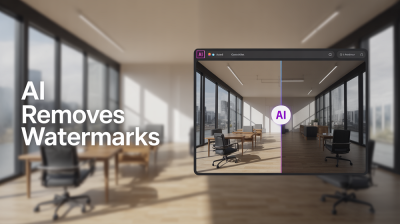If you’re on the hunt for stunning visuals, Getty Images is a go-to resource that offers a vast collection of photographs, illustrations, and videos. Founded in 1995, Getty Images has revolutionized the way we access and use visual content. With millions of images at your fingertips, it’s easier than ever to find the perfect picture to enhance your project, whether it’s for a blog, website, or marketing materials. Plus, the platform’s user-friendly search features make it simple to locate exactly what you need in just a few clicks!
Understanding Royalty-Free Images

Royalty-free images are a pivotal part of using visual content without the constant worry of licensing fees. But what exactly does "royalty-free" mean? In simple terms, when you purchase a royalty-free image, you pay a one-time fee for the right to use that image without having to pay ongoing royalties or licensing fees each time you use it. This can be a game-changer, especially for businesses and creators who need high-quality visuals without breaking the bank.
Here’s a little more about the key aspects of royalty-free images:
- One-Time Payment: Unlike traditional licensing where you might have to pay each time you use the image, royalty-free works on a pay-once basis.
- Wide Usage Rights: Generally, you can use the images in a variety of projects, from personal blogs to commercial enterprises, without seeking additional permission.
- No Exclusivity: Keep in mind that while you have the right to use the image, it can still be purchased by others, so it’s not exclusive to you.
When you’re navigating Getty Images, it's important to filter your search for royalty-free options to ensure you’re accessing the right licenses for your needs. Here are a few tips to help you identify and use royalty-free images effectively:
| Tip | Description |
|---|---|
| Filter by License Type | Use the licensing filter in your search to specifically look for royalty-free images. |
| Check Usage Restrictions | Read the license agreement carefully to understand any limitations on usage. |
| Keep Track of Purchases | Make sure to keep records of your image purchases and licenses for reference. |
In addition to being budget-friendly and versatile, royalty-free images can significantly enhance the quality of your projects. They allow you to tell a story, evoke emotions, and make your content visually appealing. As you explore Getty Images, you’ll discover a treasure trove of options that can elevate your work. So whether you're a seasoned designer or a budding blogger, understanding royalty-free images is essential for maximizing the impact of your visuals!
Also Read This: How to Sell Pictures on Alamy: A Step-by-Step Guide for Beginners
3. Benefits of Using Getty Images for Royalty-Free Images

If you're looking for high-quality visuals to enhance your projects, Getty Images is a fantastic resource. But what exactly makes it stand out in the world of royalty-free images? Let's dive into some of the key benefits that make Getty Images a go-to choice for many creatives:
- Vast Collection: Getty Images boasts an immense library with millions of images, videos, and music tracks. Whether you're in need of stock photos for a corporate presentation, stunning imagery for a blog, or captivating videos for social media, you'll find an extensive selection here.
- Quality Assurance: One of the biggest advantages of using Getty Images is the quality of its content. Each image is meticulously curated, ensuring that you have access to striking visuals that capture attention and convey your message effectively.
- Diverse Categories: From nature and travel to business and technology, Getty offers images across a multitude of niches. This diversity means you're likely to find exactly what you need without wasting time scrolling through irrelevant content.
- Easy Search Functionality: The search feature on Getty Images is designed for ease. You can filter by orientation, color, contributor, and even by the type of license you need, which makes it a breeze to find images that fit your specifications.
- Flexible Pricing Models: Getty Images provides various pricing options based on your needs, including single image purchases, subscriptions, and flexible packages for businesses. This makes it budget-friendly for both individuals and organizations.
- Legal Peace of Mind: With royalty-free images from Getty, you can rest assured that you're using licensed content. This significantly reduces the risk of copyright issues, allowing you to focus on your project rather than worrying about legal ramifications.
- Global Reach: Getty Images works with talented photographers from all over the world, which ensures that you have access to unique perspectives and culturally rich imagery. This can make your projects resonate more with a global audience.
In summary, Getty Images combines quality, variety, and a smooth user experience. These benefits make it an invaluable tool for anyone in need of striking visuals, whether for personal or professional use.
Also Read This: Tips for Selling Your Photos on iStock
4. How to Create a Getty Images Account

Setting up an account on Getty Images is a straightforward process that can open up a world of creative possibilities for you. If you're ready to start downloading stunning visuals, here's a simple step-by-step guide to getting your account up and running:
- Visit the Getty Images Website: First things first, head over to GettyImages.com. You’ll find a user-friendly interface waiting for you!
- Click on 'Sign In': On the top right corner of the homepage, you’ll see a "Sign In" button. Click on it, and then select "Join" to start the sign-up process.
- Fill Out the Registration Form: You’ll be prompted to provide some basic information. This typically includes your name, email address, and a password. Make sure your password is something secure yet memorable!
- Read and Accept Terms: You'll need to agree to Getty Images' terms of service and privacy policy. Take a moment to read through these documents so you understand your rights and responsibilities as a user.
- Verify Your Email: After submitting your information, check your email for a verification link. Click on it to confirm your account. If you don’t see the email, be sure to check your spam folder!
- Complete Your Profile: Once your email is verified, log in to your new account. You may want to complete your profile by adding additional details that could enhance your experience.
- Explore & Enjoy! Now that your account is set up, take a tour of the site! Use the search bar to find images, or browse through various categories to see what strikes your fancy.
And there you have it! Setting up a Getty Images account is a quick and easy task that can lead you to a treasure trove of visual content. Once you’re in, you'll be ready to explore all the incredible images and videos Getty offers, bringing your creative projects to life like never before!
Also Read This: See How Much Shutterstock’s Cancellation Fee Is
5. Searching for Royalty-Free Images on Getty
When it comes to finding the perfect royalty-free images, Getty Images stands out as one of the premier online destinations. Whether you’re a content creator, a marketer, or just looking for the right visual for your personal project, the search process can be straightforward if you know how to navigate the platform.
Here’s how to effectively search for royalty-free images on Getty:
- Use Specific Keywords: Start by thinking about the specific image you're looking for. Use keywords that relate to your subject. For instance, if you need an image of a beach during sunset, type in "beach sunset". The more specific your keywords, the better your results will be.
- Explore Categories: Getty Images categorizes its vast library. Take a moment to browse through various categories, such as Nature, Business, People, or Food. This way, you can stumble upon images that are perfect but may not have come to mind.
- Utilize the 'Royalty-Free' Filter: Once you’ve entered your search terms, be sure to apply the Royalty-Free filter. This ensures that you’re only seeing images that you can use without worrying about licensing fees.
- Check Image Licensing: As you scroll through your search results, look at the licensing options presented. Getty Images offers various licensing types, so double-check that the images you're interested in genuinely come under the royalty-free category.
- Save Your Favorites: If you find images you like, don’t forget to use the heart icon to save or bookmark these images. This makes it easier to return to them later and compare your options.
Don’t hesitate to play around with different search terms, as synonyms and related phrases can lead you to discover fantastic images that fit your needs.
Lastly, always remember that with great images comes great responsibility. Ensure that you respect the usage terms associated with the images you choose for your projects!
Also Read This: Downloading iStock Photos for Free Understanding Legal Alternatives
6. Using Advanced Search Filters
Finding the right royalty-free image can sometimes feel like searching for a needle in a haystack. But with Getty Images, you have a powerful tool right at your fingertips: the advanced search filters. These filters can help you narrow down your results to find the perfect image quickly. Let’s dive into how to effectively use these filters.
Here’s a look at some of the advanced search filters available on Getty Images:
- Content Type: Filter your results by selecting content types such as Photos, Illustrations, Videos, or Vectors. This allows you to focus on the medium that best suits your project.
- Orientation: Need a horizontal or vertical image? Use the orientation filter! This is particularly useful when you have predetermined space requirements for your design or layout.
- Color: Have a specific color palette in mind? Use the color filter to find images that predominantly feature the hues you’re looking for. This can help ensure that the images align well with your brand aesthetics.
- People: If your project involves people, you can filter results based on the presence of a person or group. You can even specify the number of people in the image!
- Age, Gender, and Ethnicity: For images featuring individuals, you can further refine your selection by filtering based on age, gender, and ethnicity, which allows for greater inclusivity and relevance in your projects.
Incorporating these advanced filters will not only save you time but also ensure you find images that are not only visually appealing but also contextually appropriate.
Remember, using the advanced search options is about finding images that fit snugly into your creative vision. Don’t be afraid to experiment with different combinations of filters to see what you can discover!
Also Read This: How to Become a Getty Images Contributor: A Guide to Joining the Getty Images Contributor Program
7. Evaluating Image Licensing Options
When browsing through Getty Images, it's essential to understand the various licensing options available. Licensing determines how you can use the images, and choosing the right one is crucial to avoid any legal issues. Let's break it down:
Types of Licenses:
- Royalty-Free: This allows you to use the image for multiple projects without paying additional fees each time. However, it doesn't mean you own the image; it's just a license to use it.
- Rights-Managed: This license is more restrictive. It's typically based on how you intend to use the image, such as the intended audience size or media type. Prices can vary significantly depending on these factors.
- Editorial Use Only: This type of license permits using images strictly for news or educational purposes. You can't modify the images or use them commercially.
- Extended Licenses: These offer additional rights, such as using the image in merchandise or for larger audiences. If you have a unique use case, this might be the option for you.
Before making a selection, it's wise to:
- Assess your project requirements: Determine how you plan to use the images to select the appropriate license.
- Read the fine print: Each licensing option comes with specific terms and conditions. Make sure you understand the limitations to avoid potential legal issues down the line.
- Contact support if necessary: If you're unsure about what license suits your needs best, don’t hesitate to reach out to Getty Images’ customer service for clarification.
Being thorough in evaluating your licensing options not only protects you but also ensures that you’re using images ethically and legally. Always remember that respecting the intellectual property of creators is vital in the creative world!
Also Read This: How to Submit to Getty Images Key Steps for Photographers and Creators
8. Downloading and Using Your Selected Images
Once you've found the perfect images and sorted out the licensing, the next step is downloading and using them correctly. Here’s a straightforward guide to help you through the process:
Downloading Your Images:
- Add to Cart: When you find an image you like, click on it to view the details, then select the appropriate license type and add it to your cart.
- Review Your Cart: Before proceeding to checkout, double-check the items in your cart to ensure everything is correct.
- Complete Purchase: Follow the prompts for payment. Getty Images offers several payment options, so you can choose the one that works best for you.
- Download the Image: After purchasing, you’ll receive a confirmation email, and you can log into your Getty Images account to download your images.
Using Your Images:
- Adhere to the License Terms: Make sure to follow the specific limitations stated in your image’s license. For instance, if it's "editorial use only," remember not to use it for commercial purposes.
- Edit with Care: If your license allows for modifications, such as cropping or color adjustments, proceed but keep in mind the importance of maintaining the image's intended message.
- Give Credit Where It’s Due: When feasible, credit the original photographer or Getty Images. Not only is this courteous, but it supports the creative community!
- Keep Files Organized: As you download multiple images, create a systematic folder structure on your computer to keep everything organized. This makes it easy to find images later!
Downloading and using images from Getty isn’t just about getting the visuals you need; it’s also about respecting artistic rights and adhering to legal guidelines. By following these steps and guidelines, you’ll be well on your way to creating stunning visuals for your projects while staying compliant with licensing laws! Happy searching!
Also Read This: Download Nature Images from Shutterstock With These Steps
9. Best Practices for Using Royalty-Free Images
When it comes to using royalty-free images from platforms like Getty Images, it's important to follow best practices to ensure you're getting the most out of your imagery while staying within legal boundaries. Here are some key points to keep in mind:
- Read the License Agreement: Always take a moment to read the license agreement associated with the image. Each image may have specific terms regarding usage, modification, and distribution.
- Attribute Properly: While royalty-free images typically don’t require credit, it’s a good practice to credit the photographer or the provider. This not only shows gratitude but also helps others discover great content.
- Choose High-Quality Images: Look for high-resolution images to ensure they maintain quality whether they're used online or in print. Blurry or pixelated images can harm your brand's reputation.
- Avoid Overuse: Using the same image across various platforms or campaigns can make your brand feel stale. Try to diversify your image selections to keep your content fresh and engaging.
- Modify Wisely: Many royalty-free images allow modifications. You can tailor them to fit your brand's aesthetic, but avoid changes that might violate the original creator's intent and the license agreement.
- Keep Track of Your Assets: Organize and categorize your downloaded images. This can save you time in future projects, helping you find what you need quickly.
- Check for Releases: If you’re using images featuring people or recognizable places, ensure you have the necessary model or property releases, especially if they’ll be used for commercial purposes.
- Stay Updated: Image catalogs are frequently updated, and licenses may change over time. Revisit your image sources and stay informed about any potential changes that may affect your current or future use.
By adhering to these best practices, you can maximize the potential of royalty-free images while ensuring that you respect copyright laws and the work of other creators. A thoughtful approach to sourcing images can enhance the quality and professionalism of your projects.
10. Conclusion and Tips for Successful Image Searches
Searching for the perfect royalty-free image can sometimes feel like hunting for a needle in a haystack. But with a little strategy and some helpful tips, you can streamline the process and find images that perfectly fit your needs. Here’s a quick recap and a few additional suggestions for successful image searches:
- Use Specific Keywords: Rather than broad terms, try using descriptive phrases or specific terms related to the content you need. For example, instead of searching for “beach,” you might search for “sunset beach waves.”
- Utilize Filters: Don’t forget to use the filtering options available on image platforms. You can filter by orientation, color, size, or even the type of license, making it easier to find what you're looking for.
- Explore Related Images: After finding an image you like, explore related images suggested by the platform. This can lead you to unexpected gems that might be perfect for your project.
- Bookmark Your Favorites: Most platforms allow you to save or bookmark images you’re interested in. Create a collection of potential images to compare later, making it easier to make a final choice.
- Set Up Alerts: If you’re searching for specific themes or subjects, consider setting up alerts (if available). This way, you’ll be notified when new images fitting your criteria are added to the catalog.
- Practice Patience: Sometimes, the best images take time to find. Don’t rush the process; investing time to find the right image will pay off in the quality of your final product.
In conclusion, searching for royalty-free images does not have to be a daunting task. With these tips and best practices in mind, you're well on your way to enhancing your creative projects. Remember, great visuals can elevate your content, engage your audience, and convey your message more effectively. Happy searching!
 admin
admin








